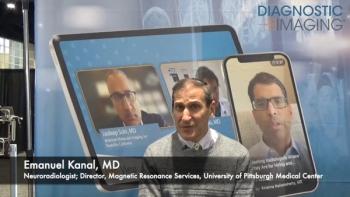
Magneto-optic access surmounts obstacles
Radiologists who toss their expensive clinical workstations in favor of standard desktop PCs can still extract DICOM images from magneto-optic disks, according to researchers at Beth Israel Deaconess Medical Center in Boston. Platform-independent industry standard connection cards now provide more flexibility for PACS administrators.
Radiologists who toss their expensive clinical workstations in favor of standard desktop PCs can still extract DICOM images from magneto-optic disks, according to researchers at Beth Israel Deaconess Medical Center in Boston. Platform-independent industry standard connection cards now provide more flexibility for PACS administrators.
Magneto-optic recording can raise compatibility and accessibility issues because many of these disks can be read only by the manufacturer's proprietary hardware and software. Researchers at Beth Israel developed a method to circumvent the problem. Its cost is low ($1500) when compared with a typical clinical workstation ($50,000 to $100,000), and the installation is basically plug-and-play.
A standard desktop PC running Windows 2000 Professional (Microsoft) and an external 5.2-GB magneto-optic storage drive (RMO-S551/SD, Sony) serve as the primary workstation for data extraction. The PC and drive are connected by a commercially available PCI SCSI card (model 2906, Adaptec).
Driver software for the interface card or the magneto-optic drive is not required when using Windows 2000 Professional, but Windows NT, Mac OS, Linux, and Unix users will need to install drivers.
Newsletter
Stay at the forefront of radiology with the Diagnostic Imaging newsletter, delivering the latest news, clinical insights, and imaging advancements for today’s radiologists.




























